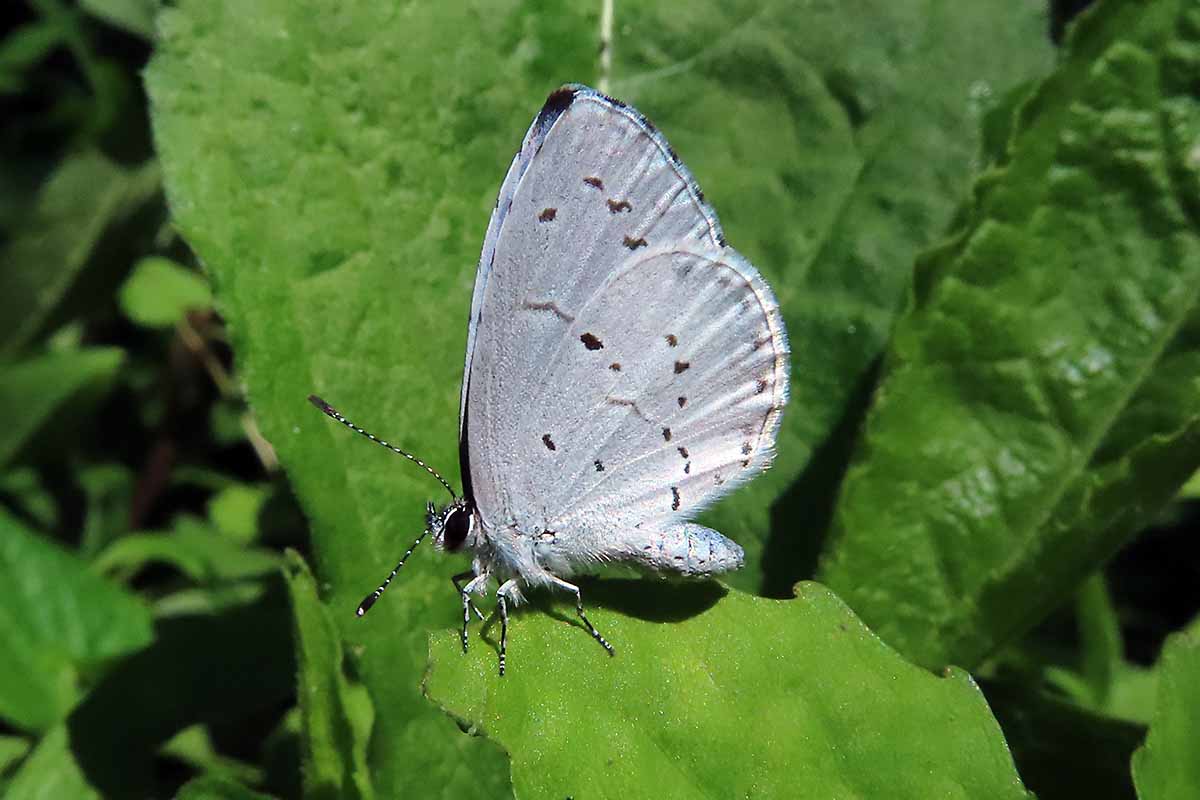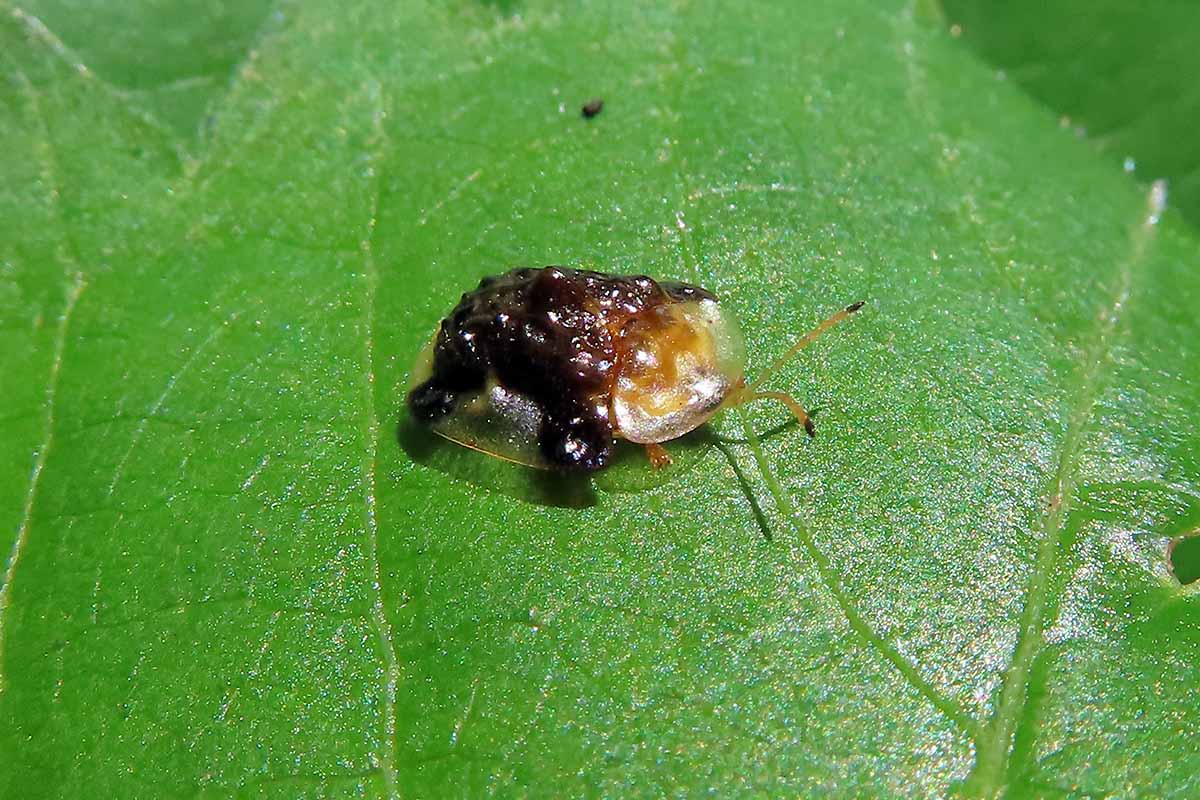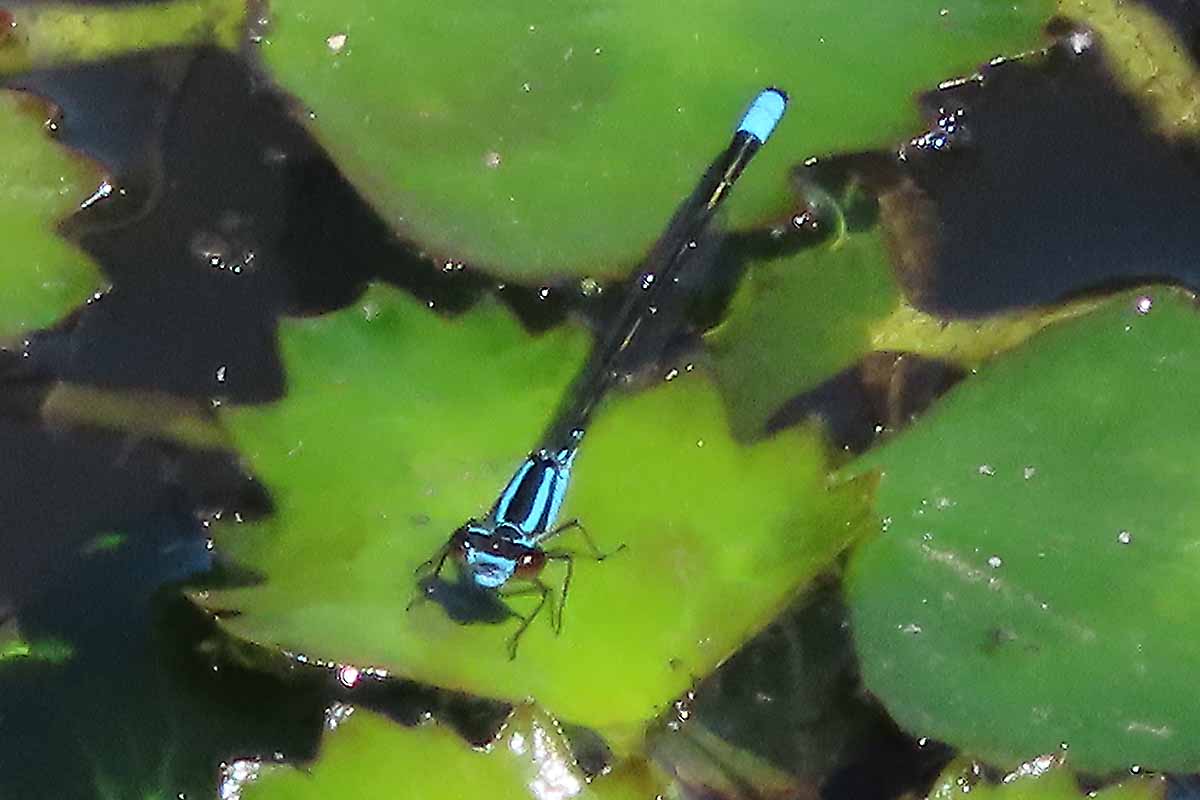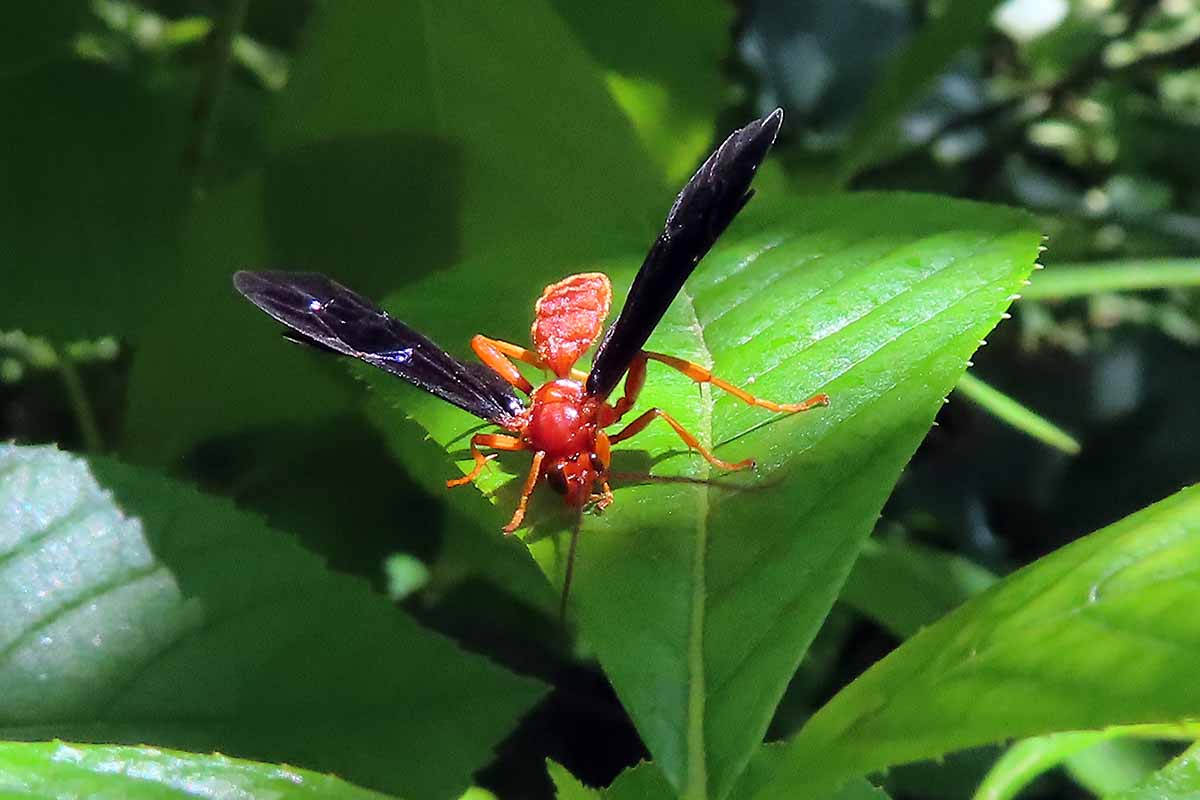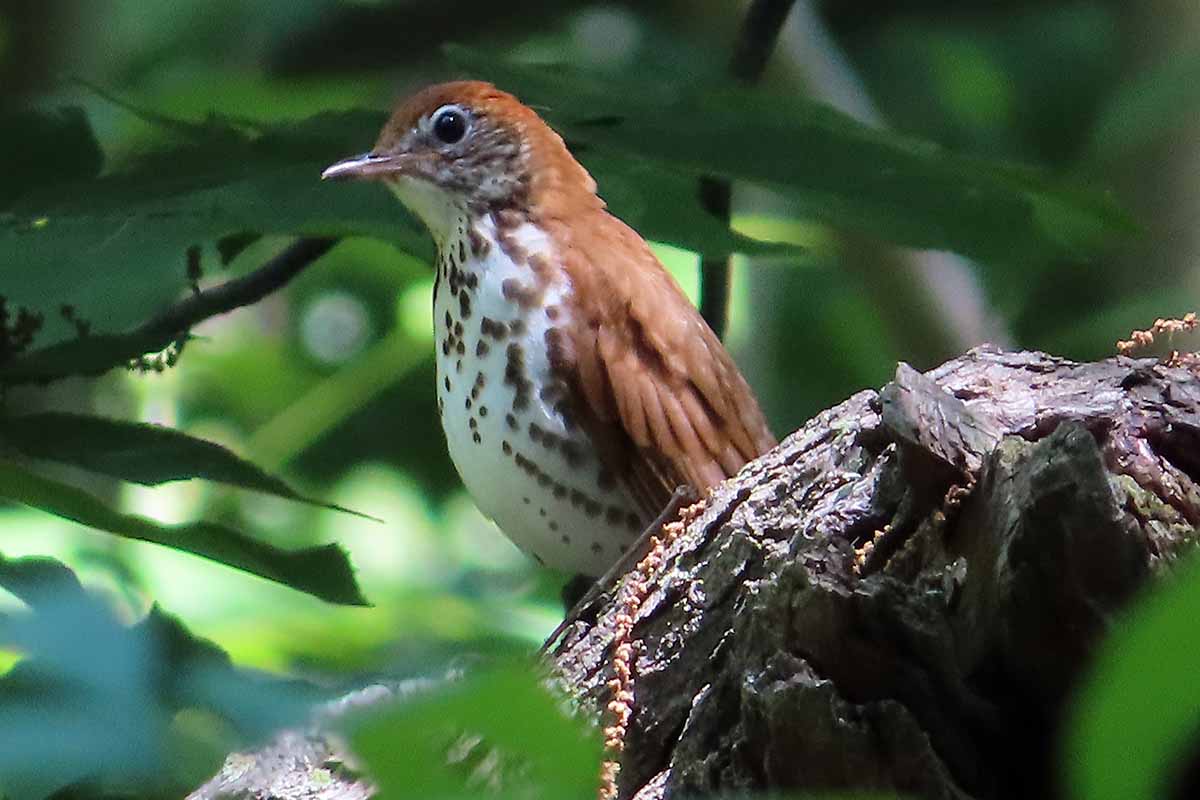Registrar: Anne Lazarus
Participants: 11
Weather: Sunny, 70-80 F, calm
Bird Species: 38
Thank you, Ken, for opening our eyes to the natural world that surrounds us and teaching us about the ecology of Van Cortlandt Park. Ecology is defined as the relationships among organisms. Each species finds its niche. We learned about the food producers (plants), the consumers (mainly animals), and the decomposers (fungi, certain insects, and more). This walk was an outdoor class. Paper and pen were important. Thank you also to Mike Freeman, who joined Ken in pointing out insects on today’s walk. Mike is a detective of the fascinating world of the tiny—the insects and their relatives.
We entered the park at the south end of the parade grounds, and the lesson began. We studied the difference between beetle and bug: beetles chew with their mandibles, while true bugs use a piercing and sucking mouthpiece to siphon nutrients. In proper ecological settings these insects are beneficial. Some pollinate; some decompose organic matter; and some, like the Ladybird Beetle, consume aphids. Our lists of the insects, arachnids, and other invertebrates seen are quite extensive.
Butterflies, moths, and odonates are fascinating insects. Van Cortlandt Park is one of the few sites in NYC where one can see the Silvery Checkerspot, a small, beautiful butterfly that breeds there. This year we did not find one, but we did see Red-banded Hairstreaks, which are also beautiful. The odonates, which consume mosquitoes and other insect prey, were abundant. We watched a Skimming Bluet, an Orange Bluet, a Common Basketball, and many other fascinating odonates.
We also compiled an extensive plant list, including trees, shrubs, bushes, flowers, and more. Many invertebrates have relationships with specific host plants. We did not neglect birds; because of the park’s rich food sources, many bird species nest in Van Cortlandt Park’s woodlands, wetlands, grasses, and shrubs. What fun it was to watch and listen to nesting Willow Flycatchers, Great-crested Flycatchers, Warbling Vireos, and Baltimore Orioles in an urban environment!
This little report only touches the surface of the rich diversity of this unique urban park. Ken informed us that he often finds uncommon species of invertebrates that live in Van Cortlandt Park. I wonder what revelations we will experience in our next walk.
Species
Birds
Wood Duck
Mallard
Rock Pigeon
Mourning Dove
Chimney Swift
Double-crested Cormorant
Green Heron
Turkey Vulture
Osprey
Red-tailed Hawk
Northern Flicker
Eastern Wood-Pewee
Willow Flycatcher
Great Crested Flycatcher
Eastern Kingbird
Warbling Vireo
Red-eyed Vireo
Blue Jay
Tufted Titmouse
Tree Swallow
House Wren
Carolina Wren
European Starling
Gray Catbird
Northern Mockingbird
Wood Thrush
American Robin
House Sparrow
American Goldfinch
Song Sparrow
Baltimore Oriole
Red-winged Blackbird
Brown-headed Cowbird
Common Grackle
Yellow Warbler
Scarlet Tanager
Northern Cardinal
Insects
Coleoptera
Lizard Beetle (Languria sp.)
Click Beetle (Ampedus nigricollis)
Clavate Tortoise Beetle (Plagiometriona clavata)
Rove Beetle (Staphylinidae)
Multicolored Asian Ladybird Beetle (Harmonia axyridis)
Diptera
Fruit Fly (Tephritidae)
Signal Fly (Rivellia sp.)
Green Bottle Fly (Lucilia sericata)
Horse Fly (Tabanus sp.)
Rust Fly (Loxocera sp.)
Robber Fly (Asilidae)
Stilt-legged Fly (Micropezidae)
Crane Fly (Limonia sp.)
Phantom Crane Fly (Bittacomorpha clavipes)
Syrphid Fly, aka Hover Fly, Flower Fly, etc. (Syrphidae)
Long-legged Fly (Dolichopodidae)
Hymenoptera
Parasitic Wasp (Braconidae)
Eastern Yellowjacket (Vespula maculifrons)
Steel-blue Cricket Hunter (Chlorion aerarium)
Mason Wasp (Euodynerus hidalgo)
European Hornet (Vespa crabro)
Honeybee (Apis mellifera)
American Bumble Bee (Bombus pensylvanicus)
Small Carpenter Bee (Ceratina sp.)
Eastern Carpenter Bee (Xylocopa virginica)
Ants (Formicidae)
Hemiptera
Four-lined Plant Bug (Poecilocapsus lineatus)
Leafhopper (Cicadellidae)
Aphid (Aphididae)
Stilt Bug (Neides muticus)
Lepidoptera
Spring Azure (Celastrina sp.)
Litter Moth (Renia sp.)
Orange-patched Smoky Moth (Pyromorpha dimidiata)
Hummingbird Clearwing Moth (Hemaris thysbe)
Red-banded Hairstreak (Calycopis cecrops)
Spicebush Swallowtail (Papilio troilus)
Silver-spotted Skipper (Epargyreus clarus)
Zabulon Skipper (Poanes zabulon)
Least Skipper (Ancyloxpha numitor)
Odonata
Skimming Bluet (Enallagma geminatum)
Common Whitetail (Libellula lydia)
Eastern Forktail (Ischnura verticalis)
Blue Dasher (Pachydiplax longipennis)
Black Saddlebags (Tramea lacerata)
Common Baskettail (Epitheca cynosura)
Ebony Jewelwing (Calopteryx maculata)
Isopoda
Sowbug (Oniscus sp.)
Mantodea
Chinese Praying Mantis (Tenodera aridifolia sinenisis)
Blattodea
American Cockroach (Periplaneta americana)
Orthoptera
Slender Meadow Katydid (Conocephalus fasciatus)
Arachnids
Opiliones
Harvestman aka Daddy-longlegs (Opiliones sp.)
Araneae
Ant-mimic Sac Spider (Castianeira longipalpis)
Dimorphic Jumping Spider (Maevia inclemens)
Fungus etc.
Honeycomb Coral Slime Mold (Ceratiomyxa fruticulosa)
Brittle Cinder (Kretzschmaria deusta)
Cracked Cap Polypore (Fulvifomes robinae)
Dryad’s Saddle (Cerioporus squamosus)
Mica Cap (Coprinellus micaceus)
Trees
European Linden
Red Oak
White Oak
Silver Maple
Norway Maple
Sassafras
Umbrella Magnolia
Hackberry
Horse Chestnut Tree
Tuliptree
Cottonwood
London Plane Tree
Staghorn Sumac
Ailanthus
